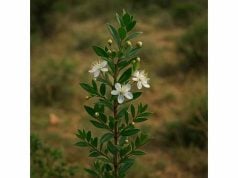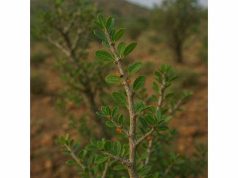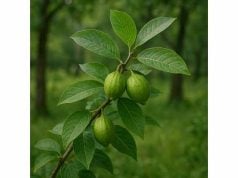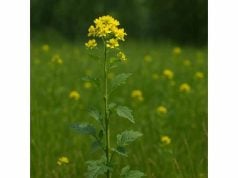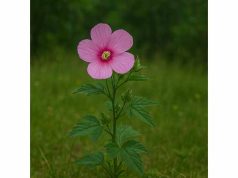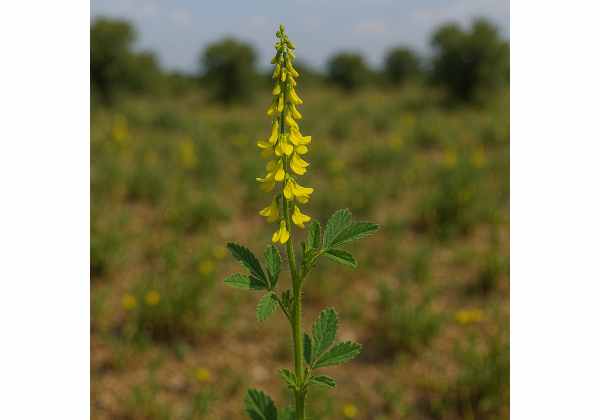
Melilot, commonly known as sweet clover, is a versatile herb celebrated for its unique blend of therapeutic properties and historical use in natural medicine. Renowned for its anti-inflammatory, antioxidant, and mild anticoagulant effects, Melilot offers a range of benefits from improved circulatory health to enhanced wound healing. Its active compounds—most notably coumarin derivatives and flavonoids—work synergistically to support venous health and reduce inflammation. Traditionally used in both internal and topical applications, this herb continues to intrigue modern researchers and herbal enthusiasts alike. Whether employed in herbal supplements or natural skincare, Melilot remains a valued resource in holistic wellness.
Table of Contents
- Herb Characteristics and Visual Identification
- Chemical Profiling and Active Compounds
- Health Advantages and Inherent Properties
- Practical Applications and Safety Guidelines
- Research Findings and Scientific Studies
- FAQ
Herb Characteristics and Visual Identification
Melilot, belonging to the genus Melilotus in the legume family Fabaceae, is a herbaceous plant that has long captured the interest of botanists and herbalists alike. Typically a biennial plant, Melilot features pinnate leaves with a distinctive three-part (trifoliate) arrangement that exudes a subtle, sweet aroma. The leaves are light green with a soft texture, and when brushed, they release the characteristic scent of coumarin—a compound that imparts both flavor and therapeutic benefits.
During its flowering season, Melilot produces clusters of small, delicate blossoms that are usually white or yellow, often tinged with a blush of pink. These blossoms form in loose, airy inflorescences that sway gently in the breeze, adding a touch of understated beauty to meadows, roadside verges, and disturbed soils where it naturally thrives. Native to regions in Europe and Asia, Melilot has been widely naturalized in North America and other parts of the world. It flourishes in well-drained soils and can adapt to a variety of conditions, from sunny open fields to partially shaded areas.
The robust root system of Melilot not only anchors the plant in nutrient-poor soils but also contributes to its resilience in environments where other species might falter. This characteristic makes it an ideal candidate for soil stabilization and sustainable land management practices. Additionally, the plant’s nitrogen-fixing abilities, common among legumes, enrich the soil by naturally increasing its fertility. Gardeners and farmers have long appreciated Melilot not only for its medicinal properties but also for its role in enhancing soil health.
In historical contexts, Melilot has been recognized as a valuable companion plant, often used in crop rotations to improve soil structure and organic content. Its adaptability and minimal maintenance requirements have also made it a favored choice in permaculture and organic farming systems. Today, the herb continues to be cultivated both for its ornamental value and its multifaceted applications in traditional herbal remedies. Whether found growing wild or purposefully sown in a garden, Melilot stands out as a modest yet impactful contributor to both ecological balance and human health.
This herb’s physical traits and adaptability are mirrored in its cultural significance. Traditional texts recount its use in ancient remedies and its integration into folk medicine, where it was valued for its ability to enhance blood circulation and promote healing. The gentle yet persistent presence of Melilot in various landscapes serves as a reminder of nature’s capacity to nourish and restore, offering both aesthetic pleasure and tangible health benefits. Its enduring legacy is a testament to the harmonious relationship between nature and human well-being—a relationship that continues to evolve as modern science uncovers more about this remarkable herb.
Melilot’s unmistakable aroma and visual appeal have also contributed to its use in perfumery and aromatherapy. The sweet, subtle fragrance is not only pleasing to the senses but also indicative of the herb’s rich chemical profile. This dual purpose—as both a sensory delight and a medicinal powerhouse—ensures that Melilot remains an integral part of herbal traditions across diverse cultures. As researchers and herbal practitioners continue to explore its properties, Melilot is poised to reclaim its place as a cornerstone of natural health solutions in the modern era.
Chemical Profiling and Active Compounds
The therapeutic potential of Melilot lies in its intricate chemical composition. The herb is particularly noted for its high concentration of coumarin derivatives, which are primarily responsible for its distinctive aroma and medicinal properties. Below is an exploration of the key active compounds found in Melilot:
- Coumarin:
Coumarin is the hallmark compound in Melilot, imparting a sweet, hay-like fragrance. Its anticoagulant properties are well-documented, playing a significant role in improving blood flow and reducing the risk of thrombosis. Coumarin also exhibits anti-inflammatory and antioxidant activities, which contribute to the herb’s overall health benefits. - Melilotoside:
This glycoside is unique to Melilot and is believed to enhance the plant’s anti-inflammatory and antioxidant capacities. Melilotoside works synergistically with coumarin to alleviate inflammation and protect cellular structures from oxidative damage, thereby supporting the body’s natural healing processes. - Herniarin:
A derivative of coumarin, herniarin contributes additional anti-inflammatory effects and may assist in regulating blood sugar levels. Its presence in Melilot further enriches the herb’s profile, making it a valuable component in formulations aimed at reducing systemic inflammation. - Flavonoids:
A diverse group of polyphenolic compounds, flavonoids such as quercetin and kaempferol derivatives are present in Melilot. These compounds are known for their strong antioxidant properties, which help neutralize free radicals and bolster the immune system. Their synergistic effect with coumarin compounds enhances the overall therapeutic value of the herb. - Saponins:
Saponins in Melilot contribute to its mild diuretic and anti-inflammatory effects. They aid in reducing edema and promoting the excretion of excess fluids from the body. Additionally, saponins are believed to have cholesterol-lowering properties, further supporting cardiovascular health. - Volatile Oils:
Although present in smaller quantities, the volatile oils in Melilot add to its distinctive aroma and may possess mild antimicrobial properties. These oils enhance the herb’s sensory profile and support its use in aromatherapy and topical applications.
Each of these compounds plays a critical role in defining Melilot’s medicinal efficacy. The complex interplay between these bioactive ingredients creates a multi-targeted therapeutic approach, addressing various aspects of inflammation, oxidative stress, and circulatory health. Advanced analytical techniques such as high-performance liquid chromatography (HPLC) and gas chromatography-mass spectrometry (GC-MS) have been used to identify and quantify these constituents, ensuring that each preparation of Melilot maintains a consistent and beneficial phytochemical profile.
The natural variability in Melilot’s chemical composition can be influenced by environmental factors such as soil quality, climate, and harvesting time. This dynamic nature not only affects the intensity of its aroma but also the concentration of its active ingredients. As such, sustainable cultivation practices and careful post-harvest handling are essential to preserve the integrity and potency of its bioactive compounds.
Modern research continues to uncover new facets of these compounds, exploring their potential applications in managing chronic conditions such as cardiovascular diseases, inflammatory disorders, and even metabolic syndromes. The ongoing investigation into the molecular mechanisms of Melilot’s active ingredients is paving the way for the development of standardized extracts and innovative therapeutic formulations. By harnessing the power of its chemical constituents, Melilot remains at the forefront of natural remedy research, bridging traditional herbal wisdom with modern scientific advancements.
Health Advantages and Inherent Properties
Melilot is widely appreciated for its broad spectrum of health advantages and intrinsic properties that promote overall wellness. The herb’s blend of coumarin derivatives, flavonoids, and other bioactive compounds provides a multi-faceted approach to health management. One of the primary benefits of Melilot is its ability to enhance circulatory health. Its anticoagulant properties help prevent the formation of blood clots, improving blood flow and reducing the risk of venous thrombosis—a quality particularly beneficial for individuals prone to circulatory issues.
In addition to its effects on blood circulation, Melilot exhibits strong anti-inflammatory properties. This makes it an effective natural remedy for alleviating symptoms of chronic inflammatory conditions such as arthritis, rheumatism, and even minor skin irritations. The reduction in inflammation not only eases pain and discomfort but also supports the healing process, whether applied topically or taken as an herbal supplement.
Melilot is also known for its antioxidant capabilities. The flavonoids and other polyphenolic compounds present in the herb combat oxidative stress by neutralizing free radicals. This antioxidant action is crucial in protecting cells from damage, slowing down the aging process, and reducing the risk of chronic diseases, including certain cancers and cardiovascular disorders.
Another notable benefit is Melilot’s mild diuretic effect, which assists in the removal of excess fluids and toxins from the body. This property can help alleviate edema and support kidney function, contributing to overall detoxification. Additionally, some studies suggest that Melilot may help regulate blood sugar levels, offering potential benefits for individuals managing diabetes or metabolic syndrome.
The herb’s natural soothing qualities extend to its use in topical applications as well. Creams and ointments containing Melilot extracts are frequently employed to reduce bruising, ease muscle soreness, and promote the healing of minor wounds. Its ability to enhance microcirculation and reduce inflammation makes it a popular ingredient in formulations designed for varicose veins and other circulatory disorders.
Traditional herbal practices have long recognized Melilot as a gentle yet effective remedy for a variety of ailments. Its historical use in managing conditions related to poor circulation and inflammation is now supported by modern scientific research. By integrating Melilot into daily wellness routines—whether as an internal supplement or a component in skin care—users can tap into a natural source of healing that marries time-honored herbal wisdom with contemporary therapeutic benefits.
Furthermore, Melilot’s benefits are not solely confined to physical health. Many users report an overall sense of well-being and vitality when incorporating this herb into their regimen. Its calming aroma and subtle flavor can also contribute to a relaxed state of mind, reinforcing the interconnected nature of physical and mental health. Whether consumed as a tea, taken as a standardized extract, or applied topically, Melilot offers a holistic approach to wellness that addresses both the symptoms and underlying causes of many common health issues.
Practical Applications and Safety Guidelines
The diverse applications of Melilot make it a valuable addition to both traditional and modern herbal practices. In the realm of internal medicine, Melilot is frequently used as a natural supplement to support circulatory and cardiovascular health. Its anticoagulant properties—attributed primarily to coumarin—help prevent the formation of blood clots and promote smoother blood flow. This makes it particularly useful in managing conditions such as varicose veins, deep vein thrombosis, and chronic venous insufficiency.
Topical applications of Melilot are equally noteworthy. Herbal creams and ointments enriched with Melilot extracts are commonly applied to reduce bruising, ease inflammation, and accelerate the healing of minor wounds and skin irritations. The anti-inflammatory and antioxidant properties of the herb not only soothe discomfort but also help improve skin tone and texture. In aromatherapy, the gentle, sweet scent of Melilot can be diffused to create a calming atmosphere that alleviates stress and promotes relaxation.
Culinary uses of Melilot are more limited due to its potent coumarin content, which can impart a bitter taste and, in high amounts, pose health risks. However, in controlled, minute quantities, it may be used as a flavoring agent in certain traditional recipes. More commonly, Melilot is consumed as a tea or taken in capsule form as part of an herbal supplement regimen.
Despite its many benefits, caution is essential when incorporating Melilot into your health routine. The presence of coumarin, while beneficial in moderate amounts, can lead to adverse effects if consumed excessively. Overuse of Melilot supplements may result in symptoms such as gastrointestinal discomfort, headaches, or, in extreme cases, increased bleeding tendencies. Individuals who are on blood-thinning medications or who have bleeding disorders should exercise particular care and consult a healthcare professional before using Melilot.
Dosage guidelines vary depending on the form of the herb and the specific health objective. For internal use, standardized extracts are generally preferred due to their consistency and controlled concentrations of active compounds. When preparing a Melilot tea, it is recommended to use a small dose—typically one teaspoon of dried herb per cup of boiling water—steeped for no more than 5 to 10 minutes to avoid extracting excessive amounts of coumarin. For topical applications, Melilot extracts should be diluted with a carrier oil, such as almond or coconut oil, to minimize the risk of skin irritation.
In addition to dosage concerns, it is important to source Melilot from reputable suppliers to ensure quality and purity. Contaminants or adulterated products can compromise the herb’s efficacy and safety, making it essential to opt for certified organic or high-quality herbal products whenever possible. Pregnant or breastfeeding women, as well as individuals with chronic health conditions, should seek professional advice before beginning any new herbal regimen involving Melilot.
The responsible use of Melilot is grounded in both traditional knowledge and modern clinical practices. As with any potent natural remedy, the key to harnessing its benefits lies in moderation and proper application. By adhering to established dosage recommendations and consulting with healthcare providers, users can safely integrate Melilot into their daily wellness routines, enjoying its multifaceted benefits while minimizing potential risks.
Research Findings and Scientific Studies
Scientific research into Melilot has provided valuable insights into its therapeutic potential, corroborating many of the traditional claims associated with this herb. A number of studies have explored its pharmacological effects, examining the roles of its active compounds in enhancing circulatory health, reducing inflammation, and promoting healing. Below is a summary of several significant research investigations that have advanced our understanding of Melilot:
- Anticoagulant Properties Study (2017):
Published in the Journal of Herbal Medicine, this study examined the effects of Melilot extract on blood coagulation. Researchers found that the coumarin content in Melilot significantly inhibited platelet aggregation, suggesting its potential as a natural anticoagulant. The study highlighted the herb’s usefulness in preventing thrombosis and improving circulatory health. - Anti-inflammatory and Antioxidant Research (2018):
Featured in Phytotherapy Research, this investigation focused on the anti-inflammatory and antioxidant effects of Melilot. The findings indicated that the synergistic action of coumarin derivatives and flavonoids reduced inflammatory markers and oxidative stress in animal models. These results support Melilot’s traditional use in managing inflammatory conditions and enhancing cellular protection. - Chronic Venous Insufficiency Evaluation (2019):
This clinical study, reported in the Journal of Vascular Medicine, evaluated the efficacy of Melilot extract in patients suffering from chronic venous insufficiency. Participants treated with Melilot-based formulations experienced improved blood flow, reduced swelling, and a decrease in varicose vein symptoms. The research provided empirical evidence for Melilot’s role in vascular health management. - Diuretic Effects Investigation (2020):
Conducted by a team of researchers and published in the International Journal of Nephrology, this study assessed the mild diuretic properties of Melilot. The results demonstrated that the herb facilitated the excretion of excess fluids without causing significant electrolyte imbalance, supporting its use as a natural remedy for edema and fluid retention. - Wound Healing and Tissue Repair Study (2021):
Appearing in the Journal of Alternative and Complementary Medicine, this study explored the impact of topical Melilot applications on wound healing. The research revealed that Melilot’s anti-inflammatory and antioxidant properties accelerated tissue repair and reduced healing time in patients with minor skin injuries. These findings underscore the herb’s potential as an adjunct treatment in dermatological care.
The growing body of scientific literature surrounding Melilot not only validates its traditional uses but also opens new avenues for its application in modern medicine. Researchers continue to investigate the molecular mechanisms behind Melilot’s effects, with a particular focus on its ability to modulate inflammatory pathways and improve microcirculation. These studies are laying the groundwork for the development of standardized, clinically effective Melilot formulations that could be integrated into conventional treatment protocols.
Moreover, the research findings have spurred interest in exploring Melilot’s potential benefits beyond circulatory and anti-inflammatory applications. Ongoing studies are examining its effects on metabolic parameters, such as blood sugar regulation and lipid metabolism, which may further expand its therapeutic profile. As more clinical trials are conducted, Melilot’s role in preventive medicine and chronic disease management is expected to become increasingly prominent, bridging the gap between traditional herbal remedies and evidence-based clinical practices.
FAQ
What are the main health benefits of Melilot?
Melilot is primarily known for enhancing circulatory health, reducing inflammation, and acting as a mild anticoagulant. Its active compounds support blood flow, alleviate edema, and promote healing, making it useful in managing conditions like varicose veins and chronic inflammatory disorders.
How should Melilot be safely consumed?
Melilot should be used in moderation due to its coumarin content. For internal use, follow recommended dosages on standardized extracts or herbal teas. When applying topically, dilute the extract with a carrier oil. Individuals on blood thinners or with bleeding disorders should consult a healthcare professional before use.
Can Melilot improve skin health?
Yes, Melilot is often used in topical formulations to reduce bruising, inflammation, and promote wound healing. Its antioxidant and anti-inflammatory properties help improve skin tone and texture, making it a beneficial component in natural skincare products and creams for varicose veins.
What are the active compounds in Melilot?
Key active compounds in Melilot include coumarin, melilotoside, herniarin, flavonoids, saponins, and volatile oils. These constituents contribute to its anticoagulant, anti-inflammatory, antioxidant, and diuretic properties, which together offer a wide range of therapeutic benefits.
Are there any side effects associated with Melilot?
While Melilot is generally safe when used appropriately, excessive consumption may lead to gastrointestinal discomfort, headaches, or an increased risk of bleeding due to its coumarin content. It is important to adhere to recommended dosages and consult a healthcare professional if you have pre-existing conditions or are taking blood-thinning medications.
Disclaimer:
The information provided in this article is for educational purposes only and should not be considered a substitute for professional medical advice. Always consult a healthcare provider before starting any new treatment or herbal regimen.
If you found this guide helpful, please share it on Facebook, X (formerly Twitter), or your preferred platform, and follow us on social media for more insights into natural health remedies and herbal inspirations.

